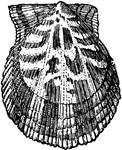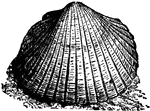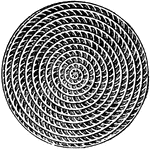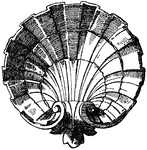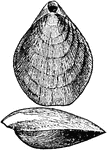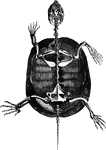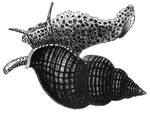
Rhynchotreta Mollusk
A mollusk radiate from the Paleozoic time, Rhynchotreta cuneata from the United States and Great Britain.
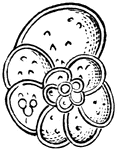
Rotalia Globulosa
This illustration shows the calcareous shell Rotalia globulosa. These shells are mostly very small,…
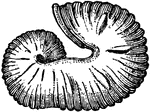
Scaphites equalis, Extinct Cephalopod Fossil
Scaphites equalis is a species of extinct cephalopods that thrived during the Cretaceous period. "A…
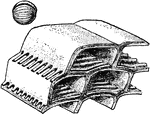
Schwagerina Verbecki
A typical foraminiferal shell shaped more or less like a football in form (diagrammatical view).

Sea-urchin without spines
"The globular crest of this animal is made up of several hundred polygonal pieces of different sizes,…

Types of Seashore Life
24. Various corals, 25. Razor-shell, 26. Cockle, 27. Various winkels, 28. Shore crab, 29. Father lasher,…

Shell Fossil
An illustration of a Club-shell fossil from the Tertiary period. The Tertiary is a an out-of-date term…

Bishop's mitre shell
"Noted for a very long proboscis, sometimes twice the length of the shell. The latter is turretted,…
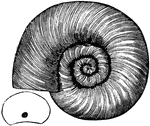
Coiled Chambered Shell
Following the species of simple septa and straight shells, came the Trocholites ammoulus, of simple…
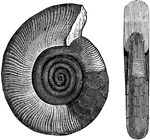
Coiled Chambered Shell
The Clymenia Sedgwickii represents a coiled shell with angulated or bent septa.

Coiled Chambered Shell
Goniatites are extinct ammonoids, shelled cephalopods related to squid, octopus, and belemnites, that…
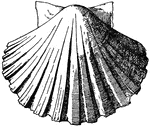
Exterior Scallop Shell
The Exterior Scallop Shell was used as a water basin in the form of a shallow dish and as a decorative…
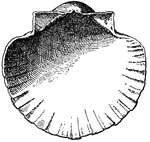
Interior Scallop Shell
The Interior Scallop Shell was used as a water basin in the form of a shallow dish and as a decorative…
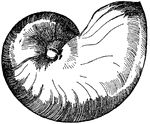
Nautilus Shell
The Nautilus Shell is a marine creature, it is shown in its natural form. It was usually placed on feet…
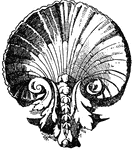
Scallop Design Shell
This Scallop Design Shell was a Louis XVI style. It was used on the lower end of a panel.

Scallop Design Shell
This Scallop Design Shell was used as a decoration of a niche. A design commonly used during the Late…

Straight Chambered Shell
Chambered shell, endless in their variations, in the earliest periods were a species with simple septa…

Coiled Chambered Shell
Baculites is a genus of extinct marine animals in the Phylum Mollusca and Class Cephalopoda. They are…
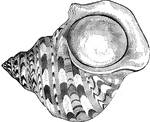
Top shell
"The top shell, T. marmoratus, has a turbinated solid shell, with convex whorls." — Goodrich,…
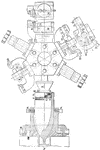
Navy Ordnance Shells
A diagram illustrating the by using a fixed revolver head while spinning the lathe to create the cone…

Slit Worm Snail
The shell of a Slit Worm Snail (Siliquaria anguina). The species is a gastropod mollusc that has an…

Snail
"Soft unsegmented bodies, bilaterally symmetrical, enveloped by a leathery mantle, which usually develops…
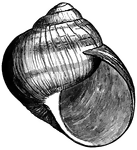
Roman Snail Shell
Helix pomatia. "A large-shelled, edible" snail, also called the Burgundy snail or escargot when used…
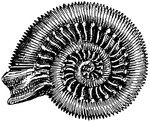
Snakestone - Ammonite
Ammonites bisulcatus. "Same as ammonite; from an old popular notion that these shells were coiled snakes…
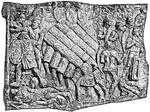
A Testudo
"A relief from the Column of Trajan, Rome. The name testudo, a tortoise (shell), was applied to the…
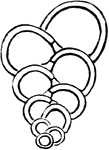
Textilaria Globulosa
This illustration shows the calcareous shell Textilaria globulosa. These shells are mostly very small,…
Elephant's tooth
"It has an aperture at each end; the animal inhabiting it is of a cylindrical form, and inclosed in…

Triloculina Josephina
This illustration shows the calcareous shell Triloculina Josephina. These shells are mostly very small,…
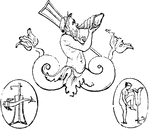
Triton
"One of the Nereides, Triton. A sea deity, son of Neptune and Amphrodite. His lower extremities were…

Marine trumpet-shell
"The marine trumpet or Triton's shell, Triton variegatus, is elegantly variegated with red…
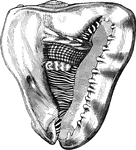
Cassis tuberosa
"The large Helmet-Shells, of the genus Cassis are used in the manufacture of cameos."…

Leatherback turtle
The leatherback turtle (once known as the leathery turtle) is remarkable among turtles for its shell;…

The Turtle
"The turtle, adapted for swimming and diving, the extremities being relatively larger than in the seal,…

Mediterranean umbrella-shell
"These animals, called Umbrella-Shells, are furnished with a shell, which, however, is often…
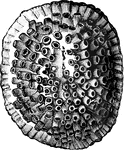
Tube of the water-pot shell magnified
"The animal in this case is inclosed in a cacareous tube, the anterior extremity of which is closed…
Tube of the watering-pot shell
"The animal in this case is inclosed in a cacareous tube, the anterior extremity of whichi is closed…

Wentle-trap
"The shell is mostly white and lustrous; turreted and many-whorled; the animal has a proboscis-like…

